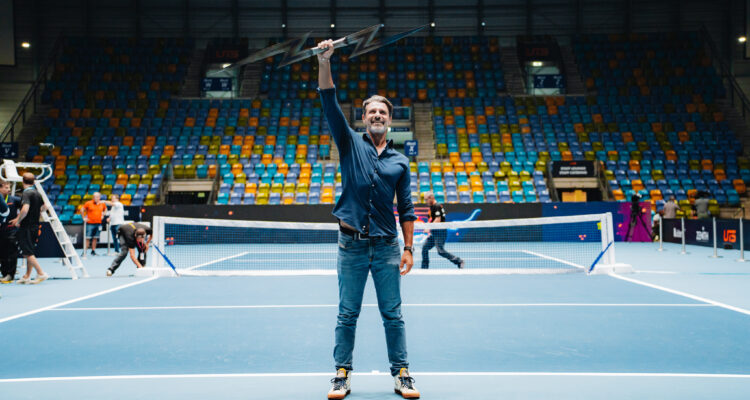FRANKFURT/STARNBERG, October 21, 2024
Patrick Mouratoglou, one of the world’s most famous tennis coaches, has evolved far beyond his initial role as “The Coach.” At 54 years old, the Frenchman has expanded his influence in the tennis world by creating the Ultimate Tennis Showdown (UTS), a new format aimed at making tennis more engaging for new audiences. Known for his work with Serena Williams, during which she won ten Grand Slam titles, Mouratoglou is also a prominent television analyst for major networks like Eurosport, ESPN, and Fox Asia. His innovative approach to tennis now includes running a global network of tennis academies, demonstrating his deep commitment to growing the sport.
Mouratoglou’s UTS is a platform designed to refresh tennis by incorporating a more dynamic, entertainment-driven style. The format, featuring shorter matches, on-court coaching, and crowd interaction, is an effort to appeal to younger, more diverse audiences. Recognizing that the traditional tennis audience remains largely tied to an older demographic rooted in the 70s and 80s, UTS seeks to bridge the gap and bring in fans who are accustomed to quicker, more action-packed events. Mouratoglou notes that while tennis has a rich heritage, its rigid rules and lengthy matches often deter potential new fans who prefer content that’s more accessible and entertaining.
Ladies and gentlemen, enjoy one of the best shot of Musetti’s career
That’s what he says #UTSFrankfurt pic.twitter.com/YcRIl0GYvr
— UTS Tour (@uts_tour_) October 19, 2024
UTS’s return to Germany, specifically in Frankfurt’s Süwag Energie Arena, highlights the importance of this market for Mouratoglou’s vision. Germany, with its storied tennis history and champions like Boris Becker, Michael Stich, Steffi Graf, and Angelique Kerber, represents a significant opportunity to further grow the sport’s popularity. The event featured prominent German players, such as Jan-Lennard Struff, demonstrating UTS’s commitment to involving local talents and engaging national audiences.
Mouratoglou also emphasizes that UTS does not aim to compete with established tennis formats like those run by the ATP or WTA. Instead, it serves as an additional, complementary experience for fans open to innovation and entertainment. The new approach—filled with music, energy, and spectacle—intends to offer a fresh perspective while supporting the broader tennis ecosystem.
Looking ahead, Mouratoglou has plans to expand UTS further, possibly introducing a women’s version of the event and exploring new, exciting venues worldwide. By pushing the boundaries of traditional tennis, he continues to establish himself as a visionary figure, shaping not only the future of the sport but also how it can reach and captivate new audiences.






